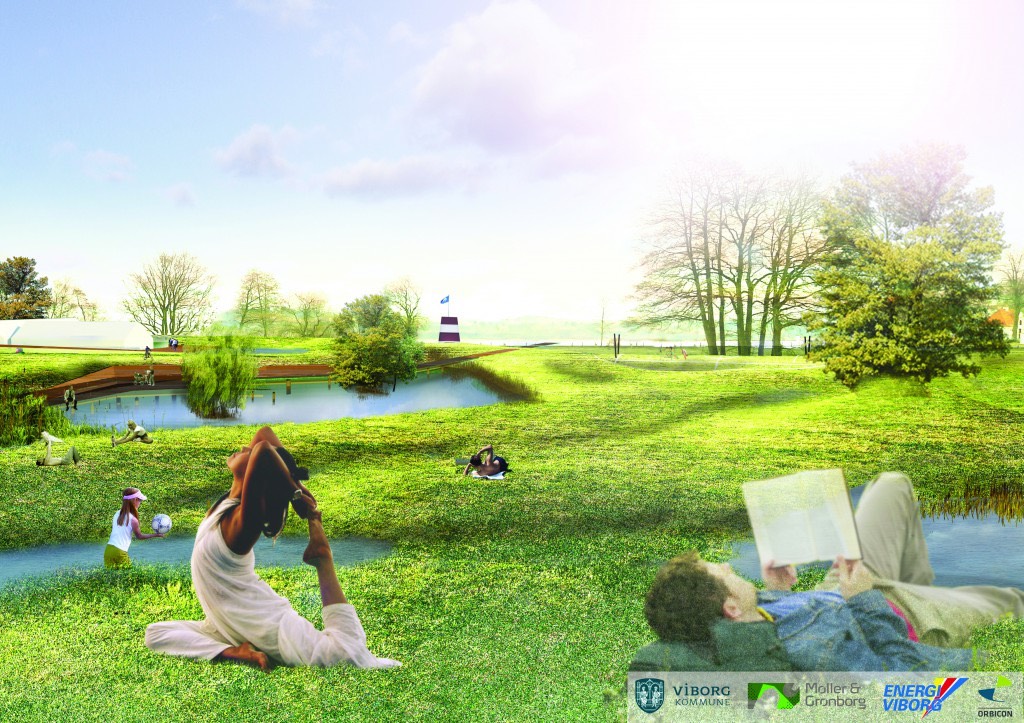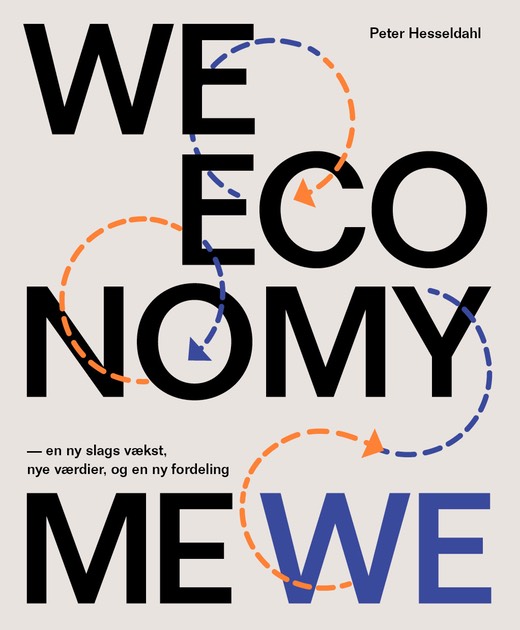In the building industry, complexity is rising. A multiplicity of agendas and issues have to be taken into account, solutions are increasingly more like ongoing processes of change and adjustments, and the number and variety of stakeholders involved is growing.

Scarcity of money and space
A good example is how the agenda of climate adaptation is forcing planners and builders to organize solutions in new ways. Massive investments will be needed in the coming years to adapt infrastructure to deal with overall increased rain-levels as well as more intense rain-events. But money is not the only constraint. Many cities are already very dense, and there is simply no room to install large new infrastructure.
The conventional way to handle overflowing water is to expand the sewer system and build large overflow water basins. They are, however, expensive to construct, and unless they are covered, which increases the cost significantly, they remove space, which could be used for more productive or recreational purposes. Obviously, removing open spaces is not popular with residents.
Instead, planners are finding that the large investments can create much more value for society if the solution combines other goals and involves stakeholders, which have not traditionally been part of handling water.
- In Viborg, planners chose to invest in creating a marshland that will becoming a large recreational area with a beach and facilities for water sports, rather than a concrete basin.
- In Høje Gladsaxe, a suburb of Copenhagen, planners cooperated with a large sports facility, to combine a renovation and rebuilding of the old sports facilities in a way that allows the areas to absorb large amounts of water if necessary.
In these cases, the necessary investments will create much greater value by involving a broader set of stakeholders and combining a range of objectives and functions, rather than choosing a traditional solution.
Læs mere her: Millionstøtte til fire Vandplus-projekter
It seems that solving complex issues like climate adaptation on your own, is simply too expensive, inefficient and inadequate.
New actors involved
Creating more complex solutions requires a new way of working. The building industry has always been one of collaboration between a complex range of professions and companies – but now even more players from new sectors are entering the process.
Traditionally, planning would be handled by consulting engineer and an architect, and between them they would be able to sketch out all aspects of the project. Now, specialists in ecology or social processes are called in as well, and architects and engineers are adding new competences to their services. Likewise, managing water used to be for engineers. Now, landscape architects are involved. Traffic and infrastructure requires anthropologists or architects, and advanced logistics is a key competence in planning new hospitals.
As Mikkel Thomassen, Partner at Smith innovation, describes: “It’s not so obvious, which type of professionalism is the most important, or who is supposed to do which jobs. The traditional roles are blending, and it challenges the old structure of organization, responsibility – even the language used to describe issues”.
Some Danish examples of these new, highly specialized players, which are becoming part of the process, are:
- 2plus1, specializing in branding of cities
- Carlberg Christensen, strategies for city planning
- Habitats, specializing in urban nature
- Smith innovation, specializing in facilitation of intern processes and involving external stakeholders
Involving citizens in processes
An expanding role for end-users, residents and citizens are another addition to the processes in the building industry. Generally, there is a growing emphasis on creating processes that involve users in creating value. Paraphrasing the title of a book by Danish Urban planner Jan Gehl, focus is changing, from buildings to life between buildings.
Creating and managing processes have become central, and in some projects, the efforts put into creating social processes are almost the same as what’s spent on the actual construction.
Involving users, designing ongoing processes and addressing a greater number of issues in larger solutions are seen as a way to create better solutions and achieve greater value for all involved.
However, the trend towards broader involvement is also driven very much by economic consideration. In many projects, creating solutions that achieve several goals at once is the only way to match ambitions and budgets.
Some projects are very explicitly calculating on savings based on active involvement and contributions from the end-users.
An example is the Klima Karré-project, the renovation of a city-block of old housing in the Østerbro quarter in Copenhagen. The renovations of the city-blocks buildings and surroundings are aiming to adapt the infrastructure to climate changes, achieve savings on energy, water and waste – and to raise quality of life for the residents.
The courtyard renovations are paid by the municipality, but on the explicit condition, that residents organize in a maintenance community to manage the facilities and maintain the processes that are necessary to achieve the environmental goals within the available budget[5].
Had the municipality chosen a top down approach of installing infrastructure that required no involvement or change in behavior from the residents the budget would be significantly higher – so much so that the ambitions would not have been realistic.
The point here is that the ambitions can only be fulfilled by engaging more stakeholders in contributing.
Complex reality clashes with detailed demands
The rising complexity and greater focus on creating processes means that solutions and outcomes are less predictable and less permanent.
“There’s a realization that there’s no ideal city, rather there’s an ongoing process and optimization, as the city and the demands of its residents change over time. We’re not creating finished projects, but working with adjustments according to long term objectives – that is a shift of paradigm”, says Natalie Mossin, associate partner at Smith Innovation.
Ironically, the demands from clients for very detailed specifications and documentation are rising, although complex process likely to require a style of planning and organization, which is more flexible and prepared for changes.
“Job tenders have become much more extensive and detailed. Previously, it was easier to develop along the way, but you are under greater risk now, if you depart from what has been predefined.
You need to explain and defend exactly what has been done – as if we could always know ahead exactly how to solve and employ to the benefit of the project the issues that come up”, says Natalie Mossin.
Is the complexity just clutter?
The growing complexity of solutions and processes are a consequence of the greater complexity of the issues, which need to be solved. However, as Mikkel Thomassen observes, all the complexity is not necessarily useful or productive: “Does the complexity actually create value – or is it just more clutter?”
In Thomassen’s observation, planners have a genuine belief in the value of involving citizens – but it is also used a preventive measure, to let residents know what is going on, so they are less likely to complain later.
In fact, as Thomassen cautions, projects with a budget that only balances because it assumes a high degree of involvement from users can be a bit like a pyramid scheme, which leaves the bill with the last one to be involved:
“If you create a solution for handling water that is based on users changing their behavior, rather than putting larger pipes in the ground – What happens if users don’t change? Then you need to pay for the pipes anyway”.
